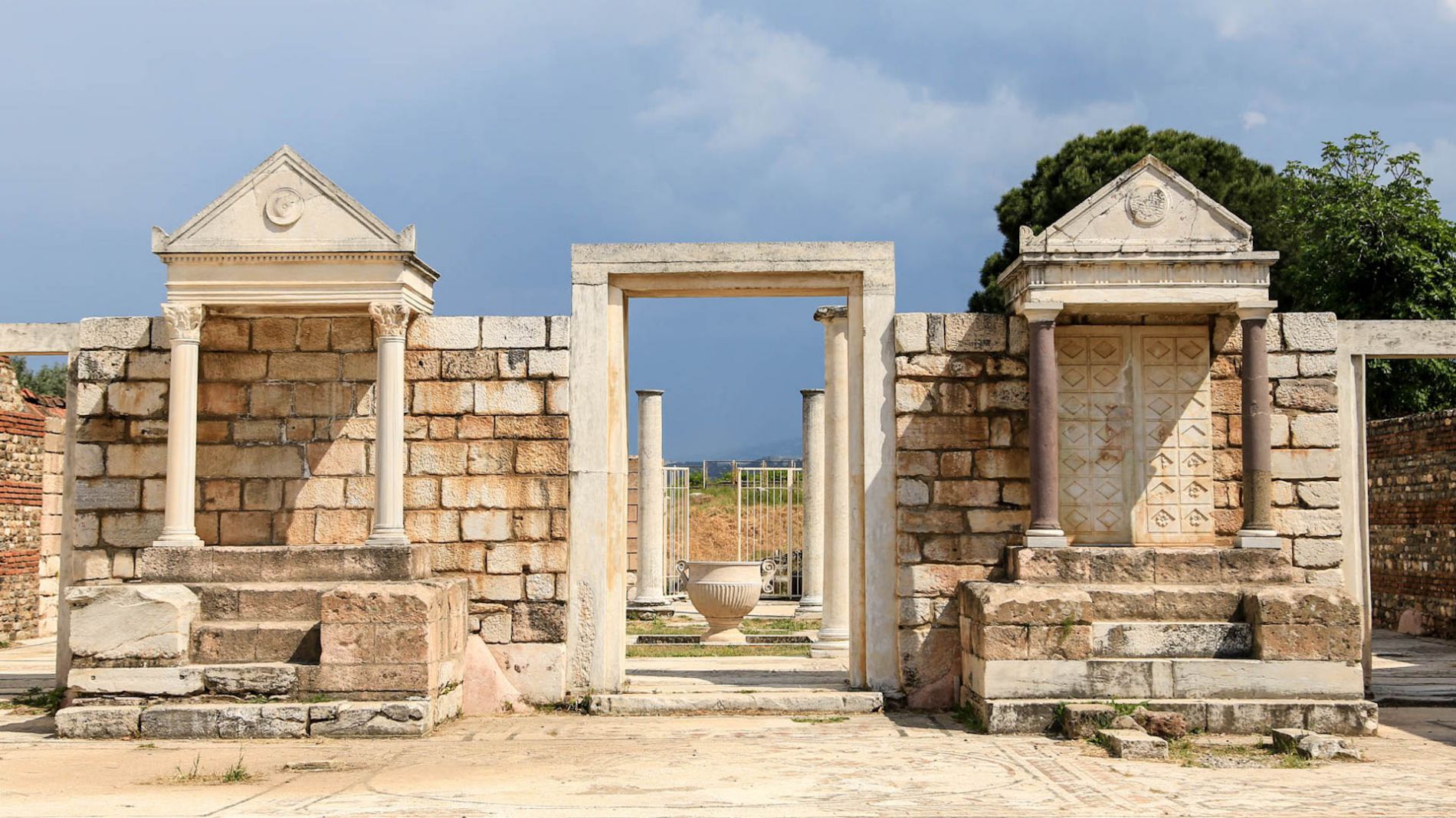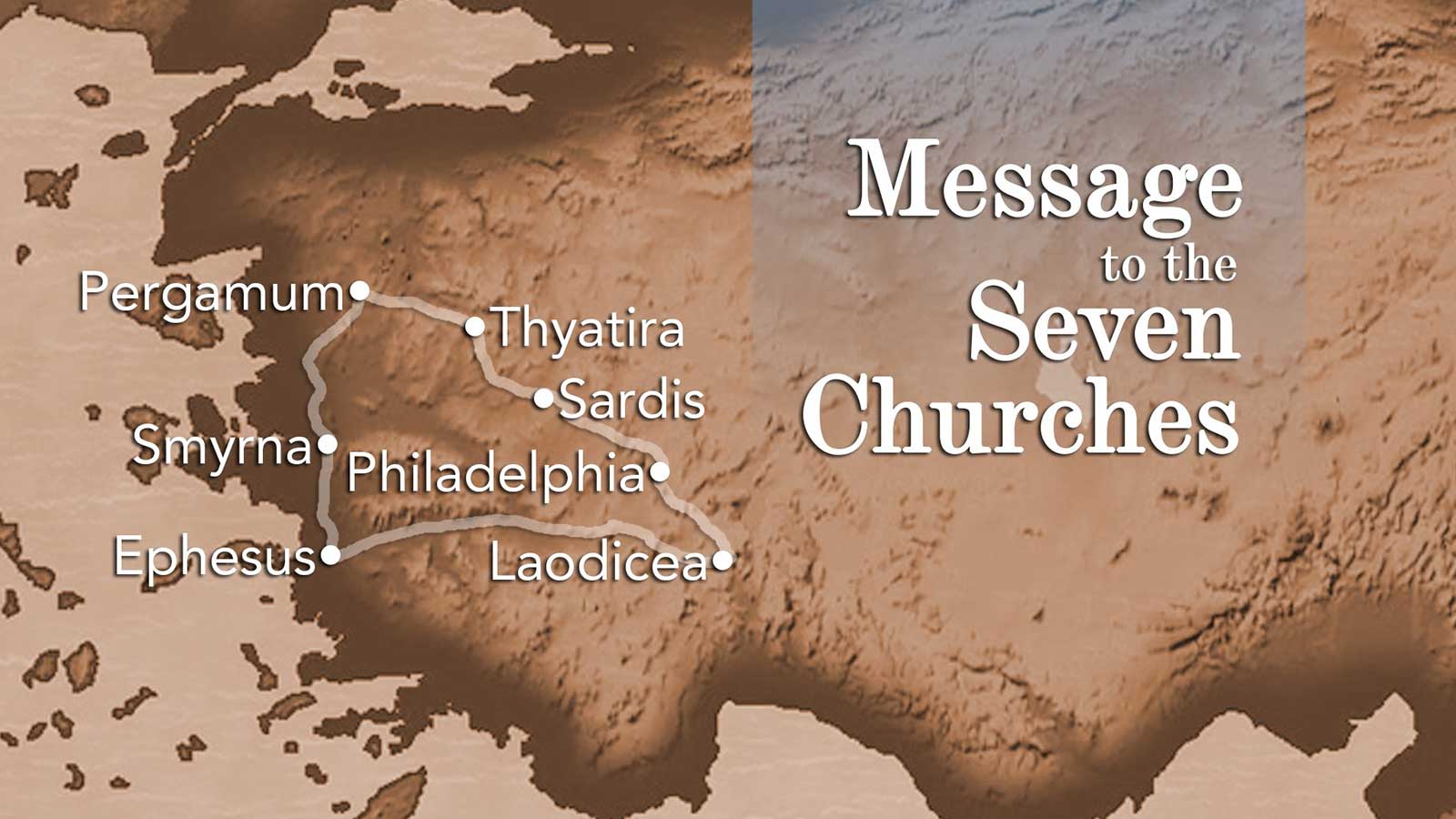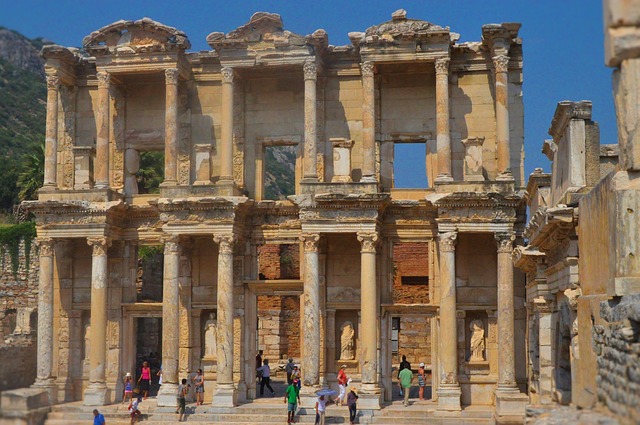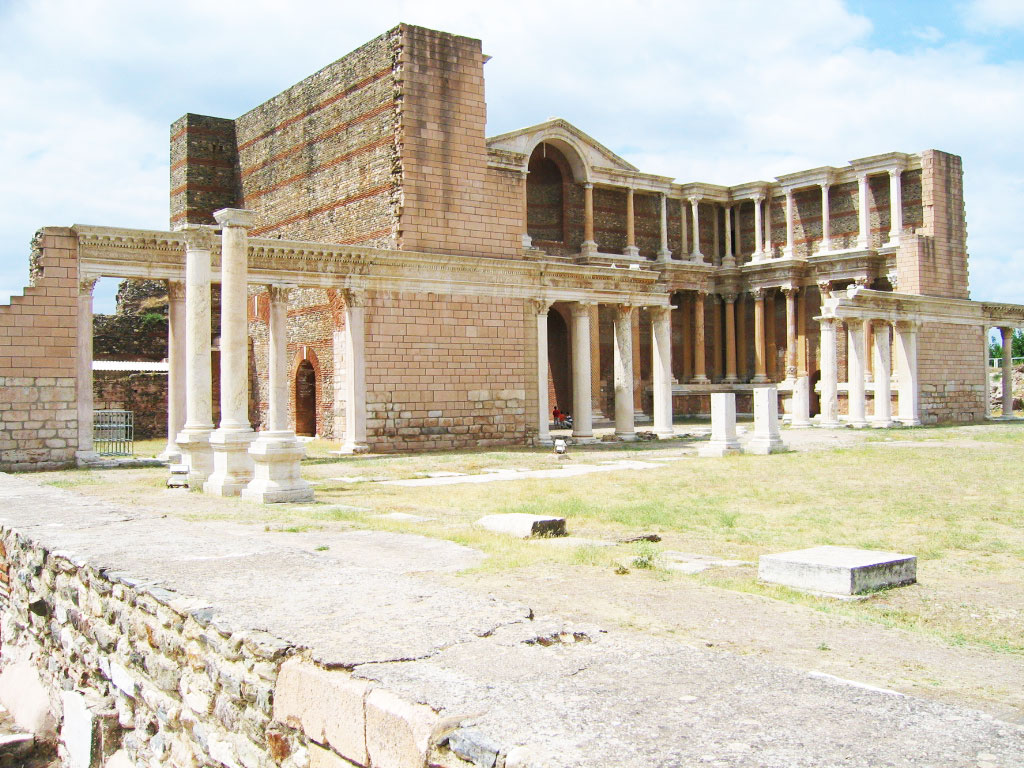

Seven Churches in the book of Revelation…Ephesus,Smyrna,Pergamon,Thyatira,Sardis,Philadelphia and Laodicea…
The Revelation of Jesus Christ which God gave him to show his servants,the things which must shortly take place…He made it known by sending his angel to his servant John,who testifies to everything he saw, that is the word of God and the testimony of Jesus Christ. The book of Revelation which is the last book in the Bible, was written around AD 95 by the apostle John, a disciple of Jesus.
It was the dangerous and confusing time for followers of Jesis Christ. More than 50 years have passed since his death on a cross and resurrection , and throughout the Roman world at the close of the first century, the disciples of Jesis and their disciples have spread the message and built a thriving church. But after the great fire in Rome in July 19,AD 64, the caesar, Nero blamed this growing religious sect known as Christians for the fire. He did that to protect doubts about the part he had in causing the fire. The strategy was blaming Christians. Because Christians were claiming that the God was greater than all other gods and greater than the caesar as well.The Roman world was filled with gods in those days.It was a pagan world. When the emperor Domitian came to the rule in AD 81, ,it was then the Roman world became a world the Christians fit in to less and less. Under his administration that held to the traditional Roman religions and policies,there were a lot of bad news for the followers of Jesis. As a result of Domitian persecution, for his faith in Christ,the apostle John,once the beloved disciple of Jesis in his youth and for years the bishop of Ephesus was imprisoned on the island of Patmos, in the midst of the Aegean Sea. Suddenly he heard a loud voice like a trumpet which said ‘write on a scroll what you see and send it to the seven churches: to Ephesus,Smyrna,Pergamon,Thyatira,Sardis,Philadelphia and Laodicea…
John begins his letters by coding Jesis Christ who said ‘ I am the Alpha and the Omega’ which meant he was the beginning and the end, the first and the last, the one who is, the one who was and the one who is yet to come. ‘I am the Almighty’ he said. That was the statement that the suffering Christians desperately needed to hear. John was told to respond to the distressing,hopeless and unbearable circumstances that had befallen the Christian comminities at the end of the first century.
Ephesus was the largest city in Asia Minor and there were several churches in the city. These churches probably responded to the false teaching and persectuians in various ways. The church was commended for not tolerating ‘evil men’. They had tested people who called themselves apostles and had found them to be false because many false prophets have gone out into the world. Although the church at Ephesus was successfully warding off the false teachers,not all was well at Ephesus. John issued a stern warning against those who ‘had left their first love’. This would suggest the passion and zeal with which the members had previously served the Lord had waned.

The letter to Smyrna began with the words ‘ I know your tribulation and your poverty,but you are rich’. When John wrote these letters, he generally offered support and encouragement to the church along with negative criticism for the ways that some people within the congregation had compromised their faith. In the case of the letter to Smyrna, John’s letter offered encouragement but no negative critism. The church at Smyrna as a whole remained faitfull in the face of these troubles. This letter is one of only two letters in Revelation that does not offer negative criticism.
The letter to the church of Pergamon began with a reference to Pergamon as ‘Satans’s Throne’ and the place ‘where Satan dwells’. Of the seven churches mentioned in the Revelation, the opposition against the church was the most intense at Pergamon. Those who maintained their faith and refused to worship the images of the emperors were executed. It has been popular to point to the altar of Zeus found on the acropolis at Pergamon as ‘Satan’s Throne’. However,Satan’s throne more likely referred to the Asklepion,healing facility dedicated to the god ASklepius,the son of Apollo. Asklepius was represented with a staff and a snake wound around it. This symbol is used as the emblem of medicine today. Almost all coins minted at Pergamon had snakes represented on them. However in both Jewish and Christian minds,the snake was assosiated with Satan.
As with most of the letters in Revelation, however, there were problems at Thyatira. The church was tolerating a woman prophet, whom John labeled ‘Jezebel’. She was misleading the church at Thyatira. She was enticing Christians to engage in the acts of immorality and to eat things sacrified to idols. John or his messengers had confronted the woman prophet earlier but these efforts did little to correct her teachings. The teachings of Jezebel designated ‘the deep things of Satan’.Not all those in Thyatira were influenced by the teachings of Jezebel. John referenced some whodid not follow her teachings. For those who have remained faithfull, John offered encouraging words to ‘hold fast’ until the Lord’s return.
When writing to the church at Sardis, John offered a metaphor :’ I know your deeds that you have the reputation that you are alive but you are dead.’ Sardis had an illustrious reputation extending back to the days of the wealthy King Croesus who made his capital Sardis. The city and evidently the church as well continued to thrive at the time when John wrote, but the author warned the congregation that spiritually speaking,the church was dead. To thrive socially and economically in the major cities of Asia Minor during the reign of Domitian meant that one needed to support the imperial cult. The church in Smyrna refused to do this but the church at Sardis chose to follow the demands of their fellow citizens and to participate in the imperial festivities. John warned them to ‘wake up and remember what they had heard,keep teachings and to repent.’

The church at Philadelphia was one of only two churches in the book of Revelation that was positively commended without any negative corrections. Like the church at Smyrna, the church at Philadelphia was faithfully persevering in the midst of the harassment and adversitiy. The letter to the church at Philadelphia described the risen Lord as ‘ the one having the key of David: the one who opens and nobody shuts and the one who shuts and nobody opens’. The Christians had little power in those days and it was impossible for them to buy or sell anything in the city. But for the faithfull Philadelphians,the Lord, who holds the key of David,promised ‘an open door which no one can shut.’ The key may not open doors in Philadelphia but it would open the door to God’s kingdom.
In Revelation, the church at Laodecia was described as ‘neither cold nor hot’, a metaphor to characterize the dispassionate nature of the believers in the city.Mediocrity might be acceptable in some aspects of life, but for the risen Lord bland faith was unpalatable. As a result John wrote ‘I will split you out of my mouth.’The Laodiceans were affluent and felt they did not need anyone’s assistance. While Laodiceans felt that they were self sufficient and had need of nothing, John continued to write:’ you do not know that you are wretched and miserable and poor and blind and naked.’ The upbeat tone is absent in the letter to the Laodiceans written by John.
The letters written by John the apostle end with these words: ‘He who has an ear, let him hear what the spirit says to the churches.’ And all these seven churches of the Revelation are in the western part of modern Turkey today.
